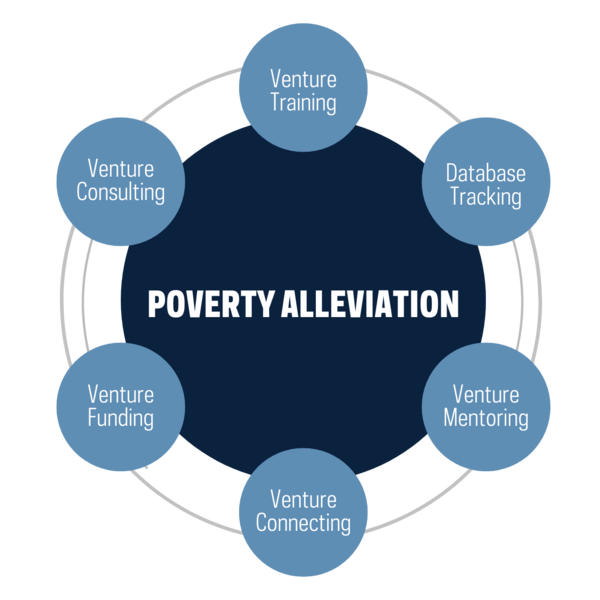Program Structure

The program structure combines six core elements in an integrated approach to alleviating poverty through entrepreneurship. We engage entrepreneurs from adverse circumstances over a 10-month period. Participants are guided through the following multi-faceted components:
- Training: The program begins with a six-session Bootcamp held in the community on Saturday mornings that introduces basic tools, concepts, and principles relevant to launching and growing a successful venture when one has little to no resources or background. Follow-up training is provided once a month on specialty topics.
- One-on-One Consulting: As a follow-on stage from the training, a consulting initiative finds faculty, graduate and undergraduate students, and other partners working one-on-one with entrepreneurs helping them solve particular problems.
- Mentoring: Entrepreneurs can receive a mentor who is a successful entrepreneur and, where possible, has experience related to the type of business the entrepreneur is working on. In addition, an ‘expertise pool’ of mentors is available with advice on specific problem areas.
- Resource Connect: A quarterly series of networking events is scheduled to connect entrepreneurs in the program to other businesses in the community, and a co-marketing site encourages community members to do business with these entrepreneurs.
- Microcredit: Involves working with local organizations and financial institutions to create a micro-credit fund that provides low-interest and no-interest loans and grants to individuals as they attempt to launch ventures.
- Research and Tracking: A tracking database is used to monitor progress of these entrepreneurs for three years. A large number of descriptive variables, activity metrics, and outcome metrics are tracked with the goal of identifying best practices and patterns in the development of these ventures.
Participants must complete the training phase of the program to be eligible for the mentoring phase. Participants must complete the mentoring phase to be eligible for the consulting phase. We are also continually experimenting with new value-added elements in each of these six areas.